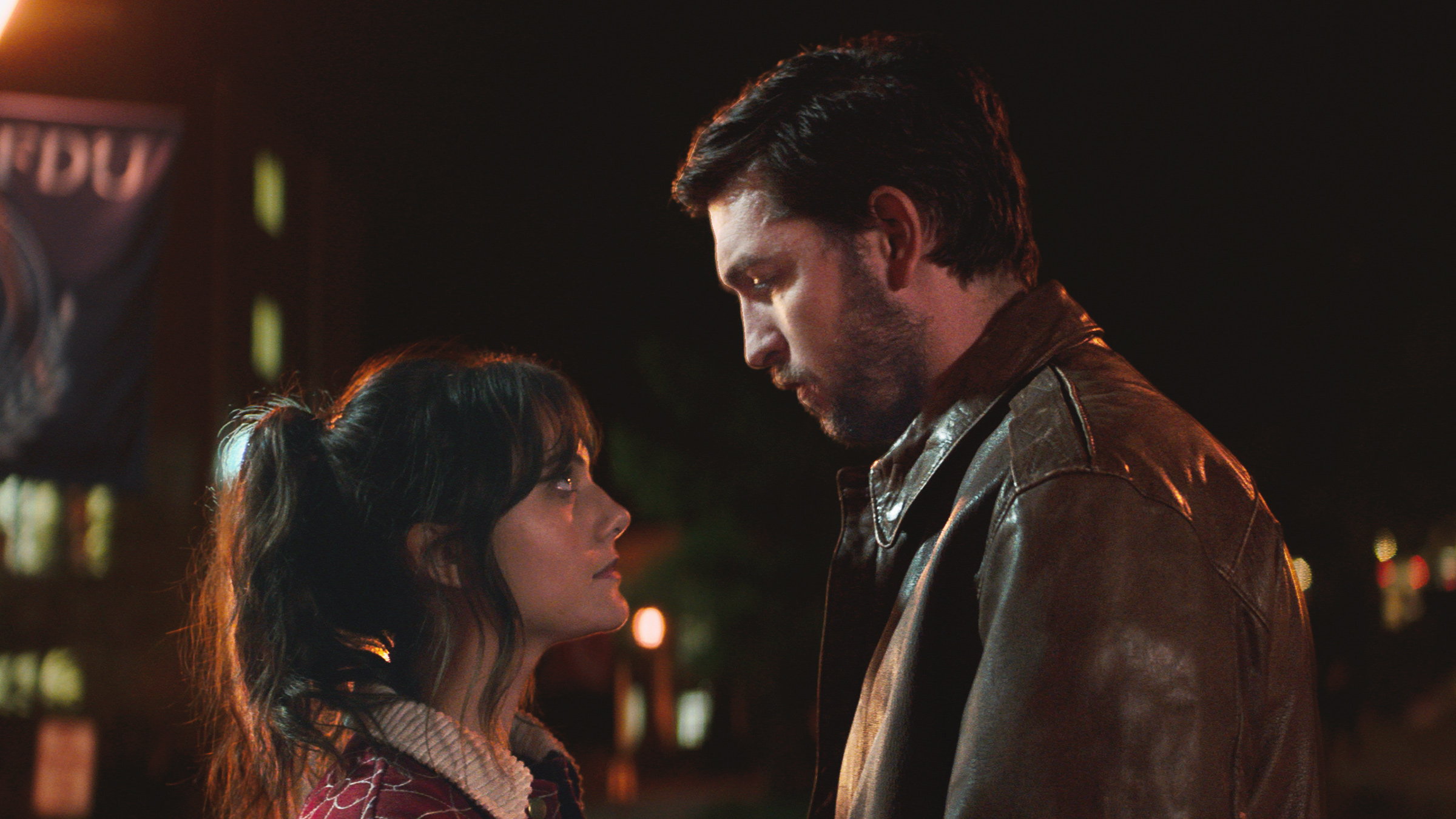Channing Tatum’s stripper Magic Mike pulls on bookcases and beams in the Miami home of a wealthy woman played by Salma Hayek Pinault. Hayek Pinault’s character looks confused, but if you’ve seen a Magic Mike movie, you know Mike is testing whether the furniture will hold up to his swinging and gyrating. Tatum has a particular talent for swiveling and thrusting in dances steamier than most sex scenes. In Magic Mike’s Last Dance, out Feb. 10, Tatum and Hayek Pinault’s characters do wind up in bed together, but whether they consummate the relationship is almost academic. He has already wrapped her legs around him and buried his face in her breasts before they ever undress, a rare moment of physical intimacy in a modern film with a big marketing push.
Movies aren’t sexy anymore—or at least the big-budget movies that studios dedicate resources to are devoid of lust. Comic-book films have come to dominate the box office, and in the words of Steven Soderbergh, the director of Last Dance, “nobody’s f-cking” in those movies. It’s a sentiment he originally shared after being asked why he wasn’t interested in helming a superhero movie himself. “You can imagine the reaction to those comments,” he says now. But it’s true. The era of Michelle Pfeiffer’s Catwoman clawing the clothes off Michael Keaton’s Batman are gone. Instead we get Captain America, a character whose confounding virginity, given that he’s played by sex symbol Chris Evans, has been hotly debated for more than a decade.
Soderbergh specializes in adult dramas. His movies, like Sex, Lies, and Videotape, Out of Sight, and Ocean’s Eleven, often exude sexiness, whether or not the characters act on their passions. “We liked the idea of making a sexy movie where there’s essentially no nudity,” he says of Last Dance.
Read More: These Are the Most Sexually Provocative Movies of All Time
But these days studios don’t put sexy thrillers or romances in theaters. They’re relegated to streaming. That was supposed to be the fate of Last Dance, which was financed by HBO Max. Soderbergh’s last three films were released exclusively on the platform despite featuring stars like Meryl Streep. “Kudos to Warner Bros.’ saying, when they saw the film for the first time, we have to go out theatrically,” he says. “That was thrilling because it was unexpected.”
Magic Mike has spawned two sequels, stage shows across the globe, and a reality TV series. That playing the latest installment in theaters would even be a question says quite a bit about the death of sex in multiplexes. Once upon a time, audiences returned to James Cameron’s Titanic again and again to rewatch that literally steamy scene between Leonardo DiCaprio and Kate Winslet. Now, Cameron’s second Avatar movie has nary a cuddle, let alone the alien sex featured in his first one. Erotic thrillers like Fatal Attraction and Basic Instinct, once box-office gold, are long gone. So are the films embraced by ’80s kids that casually dropped in sex, like when a ghost performs oral sex on Dan Aykroyd’s character in Ghostbusters. The Fifty Shades trilogy made more than $1 billion but was critically panned and failed to spawn similar series.
In 2019, Playboy pulled data from IMDb and found just 1.21% of the 148,012 feature-length films released in the 2010s contained depictions of sex, the lowest percentage of any decade since the 1960s. “I miss it,” Soderbergh says of sex in film. “It’s a thing we all have to reckon with, an axis we all have to navigate in our lives as creatures on the planet, so I don’t know why it isn’t addressed in a more matter-of-fact way.”
Captain America’s libido was literally frozen in time. In the first Captain America movie, set during World War II, the wholesome hero nurtured a crush on a British agent. But before the two could so much as share a dance, he crash-landed an airplane and awoke in 2011 having been preserved in ice. Despite touting such a perfect rear end it came to be known as “America’s ass,” he never ventured beyond a brief kiss in more than half a dozen Marvel flicks.

Superhero movies used to be horny. Batman’s costume had nipples on it. The upside-down kiss between Tobey Maguire’s Spider-Man and Kirsten Dunst’s M.J. was a phenomenon. Even in the early days of the Marvel Cinematic Universe, Robert Downey Jr.’s Iron Man was a playboy who installed stripper poles in his jet. Then, in 2009, Disney bought Marvel for $4 billion—acquiring characters like Captain America, Thor, and Iron Man, and later cutting a deal to co-create the Spider-Man movies with Sony—and Iron Man settled into the trope of good dad. (Since the acquisition, only one Marvel movie, The Eternals, has shown sex, but it tanked at the box office so it is unlikely to be a new model.)
Edward Zwick, who directed About Last Night and Love & Other Drugs, jokes, “I don’t even know how those superheroes take off their clothes wearing those unitards. There must be zippers, but I don’t remember seeing a zipper.” He argues that the lack of lust makes those superbeings seem even less human. “To not include sexuality is to take one whole color off your palette,” he says. “You end up with relationships that are less complex.”
The directors TIME spoke to said they’d never felt pressure to tone down the sex in their movies. But as people abandon the theater for streaming, studios have abandoned the mid-budget movie for grownups, the kind of films that Zwick and Soderbergh make. Instead they’re investing in stories with pre-existing intellectual property (IP) that can appeal to all ages. That means pursuing a PG or PG-13 rating, says Shawna Kidman, a professor at the University of California, San Diego, and author of Comic Books Incorporated. “Especially post-COVID, movies run in theaters for less time before they hit streaming, so they need to have a quick box-office return,” she says. “You can’t have an R-rated movie open at that size.” Of the 10 top-grossing movies at the domestic box office in 2022, none were rated R.
Sign up for More to the Story, TIME’s weekly entertainment newsletter, to get the context you need for the pop culture you love
The Motion Picture Association, which gives movies their ratings, tends to be more skittish about sex than violence. Zwick theorizes that this aversion to sex may be baked into the American ethos. “This hasn’t been true of European film. Why is that?” he asks. “America, we have this tradition of being a moralist society. And it felt for a long time like we had put that to rest.” Recent films that deal frankly with sex like Portrait of a Lady on Fire and The Worst Person in the World were among the most acclaimed out of Europe, but international markets don’t face the same business pressures as Hollywood.
America’s capitalist ambitions certainly play a role. “In the mid-2010s, getting into the Chinese market became essential for any big-budget movie to succeed,” says Kidman. “And with Chinese censors, it’s not always clear what they will allow and what they won’t, so having a sex scene even without nudity, it’s a risk.” Erich Schwartzel writes in Red Carpet: Hollywood, China, and the Global Battle for Cultural Supremacy that Chinese censors pulled Quentin Tarantino’s 2012 movie Django Unchained from theaters—even after it was re-edited to eliminate nudity—because an associate of a Communist Party official thought she may have briefly glimpsed Jamie Foxx’s penis.
Kidman offers another theory for the evaporation of ardor in film: the death of the movie star. “I kind of blame Marvel and Disney,” she says. “If you saw a movie in the ’80s or ’90s or 2000s, you were most likely seeing it because it was star-driven. Movie stars don’t open movies anymore. Superhero characters do.” She cites Mr. and Mrs. Smith, an action flick marketed on the chemistry of Brad Pitt and Angelina Jolie. Those stories have shifted to streaming: Mr. and Mrs. Smith is now being adapted for TV.
Soderbergh says the industry is fretting over this problem. “How are we going to make new movie stars if people’s primary motivation for going to the movies is the IP, not the actors?” he asks. “Nobody has the answer.”
Last Dance is the first post-#MeToo Magic Mike. It contends male strippers help women feel empowered. An entire dance is set to the song “Permission.” “We wanted to reflect the conversation that we’re hearing,” says Soderbergh.
Because sex scenes have long been made by and for men, studios may fear that sexy movies are inherently sexist movies. Revelations like Maria Schneider’s story of feeling violated while filming Last Tango in Paris changed the way Hollywood shoots a sex scene. Filming safely now involves hiring an intimacy coordinator to choreograph the scene and ensure the actors’ comfort.

But even the most considered sex scenes will be subject to online discourse. “Twitter wouldn’t allow Pretty Woman to exist today,” says Susanna Fogel, whose film Cat Person, an adaptation of the viral New Yorker story about bad sex, debuted at the Sundance Film Festival in January. “In some ways that’s good because that movie is problematic. But in other ways it contributes to this fear of exploring sexuality.” If people are not exposed to sex in film, she says, they lose an important reference point for what it can—or should—look like. “And that seems to be worse for the culture than movies that show some adult situations in context.”
Porn is more accessible than ever and has supplanted some erotic movies. But studies show that millennials and Gen Zers are having less sex than previous generations despite the ubiquity of explicit content online. In one cringe-inducing scene in Cat Person, a man played by Nicholas Braun tries to mimic what he’s seen in porn during sex with a college-age woman (Emilia Jones). “His projection of how to be sexy is coming from a canon that has nothing to do with a woman’s interests or communication about what she might want,” says Fogel.
Read More: Why Are We Still Having So Little Sex?
Cat Person wasn’t the only racy film at Sundance. Minutes into Fair Play, a character played by Alden Ehrenreich performs oral sex on his girlfriend (Phoebe Dynevor) while she has her period. The movie sold for $20 million to Netflix, which means most viewers will watch it in the privacy of their homes. The streamer will no doubt promote the movie to subscribers who know Dynevor from her breakout role in the bodice-ripping series Bridgerton.

There’s more sex on TV than ever. The high schoolers on HBO’s Euphoria are having messy sex, joyless sex, and, occasionally, satisfying sex. White Lotus interrogated the interplay of desire, money, and power. On Netflix’s Sex Education teens explore their urges and sexuality. “Television for decades had to contend with standards and practices and pretty strict censorship,” says Kidman. “With streaming, there’s no ratings, no limitations.” TV has also broken out of the bounds of the straight, white relationships that still dominate film.

Intimacy coordinator Ita O’Brien, who was on set for Last Dance, says it can be hard to tell a tale of intimacy in a two-hour format. She points to Hulu’s Normal People, which she also worked on, about young people who fall in and out of bed with each other as their circumstances shift. “Can you imagine that being a film?” asks O’Brien. “Twelve episodes allow you the chance to get at the depth, the complexity, the intensity of that relationship.” Similarly, Michaela Coel’s I May Destroy You needs six hours to explore the gray areas of consent.
Read More: How Sex on TV Got Real
Of course viewers might watch sensual entertainment at home for other reasons. “There was a joke going around the set when we were shooting the first dance with Channing and Salma if it was possible to track the data to see how many people paused the movie at, like, the 15-minute mark at the end of that scene,” says Soderbergh.
But he argues there’s value in watching a sexy movie with strangers. At a recent screening of Last Dance in New York City, viewers began letting out “woos” as Tatum stripped. Others joined in. “It’s a very active, participatory experience for the audience,” Soderbergh says. “They’re hungry.”
More Must-Reads From TIME
- The 100 Most Influential People of 2024
- Coco Gauff Is Playing for Herself Now
- Scenes From Pro-Palestinian Encampments Across U.S. Universities
- 6 Compliments That Land Every Time
- If You're Dating Right Now , You're Brave: Column
- The AI That Could Heal a Divided Internet
- Fallout Is a Brilliant Model for the Future of Video Game Adaptations
- Want Weekly Recs on What to Watch, Read, and More? Sign Up for Worth Your Time
Write to Eliana Dockterman at eliana.dockterman@time.com